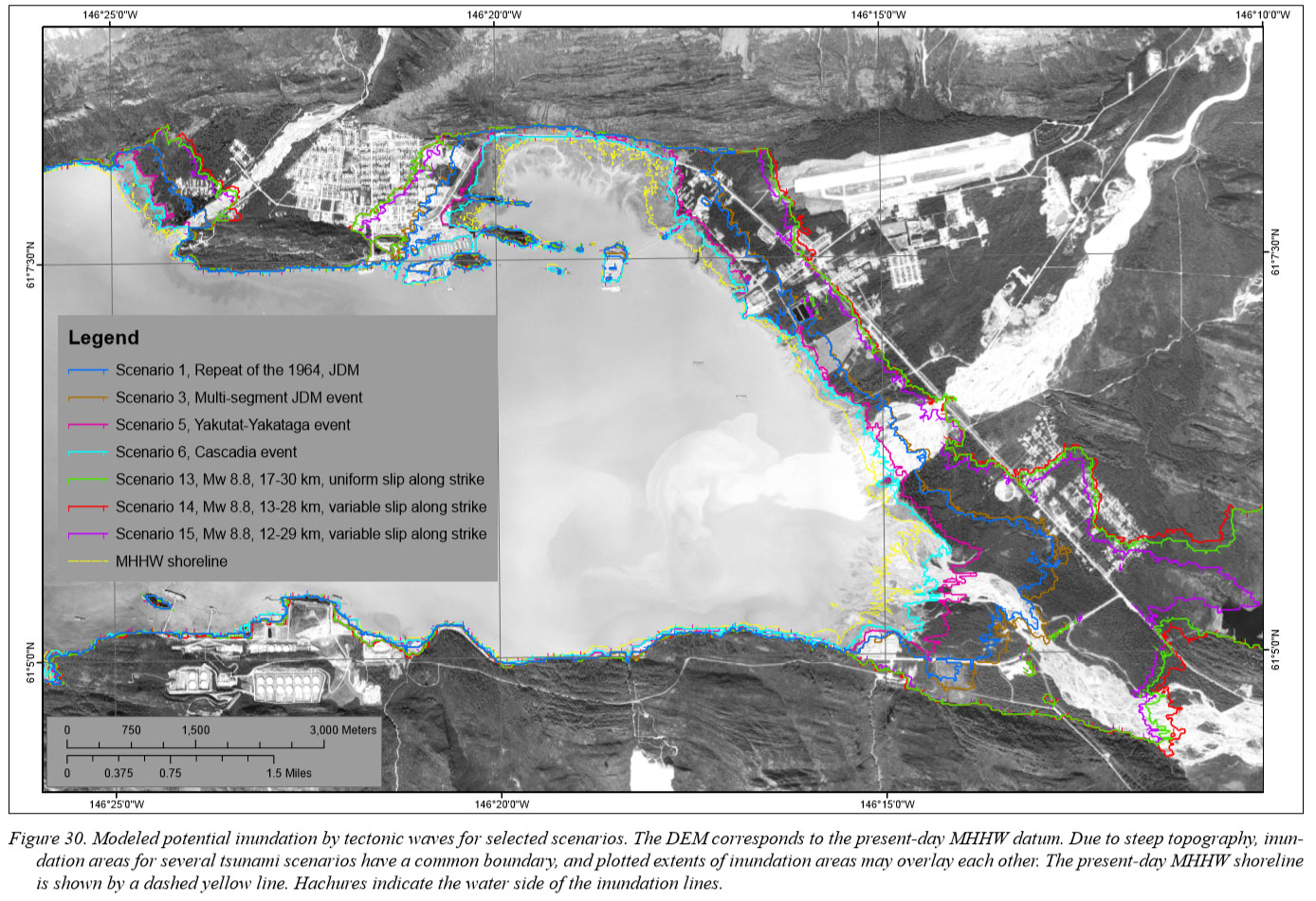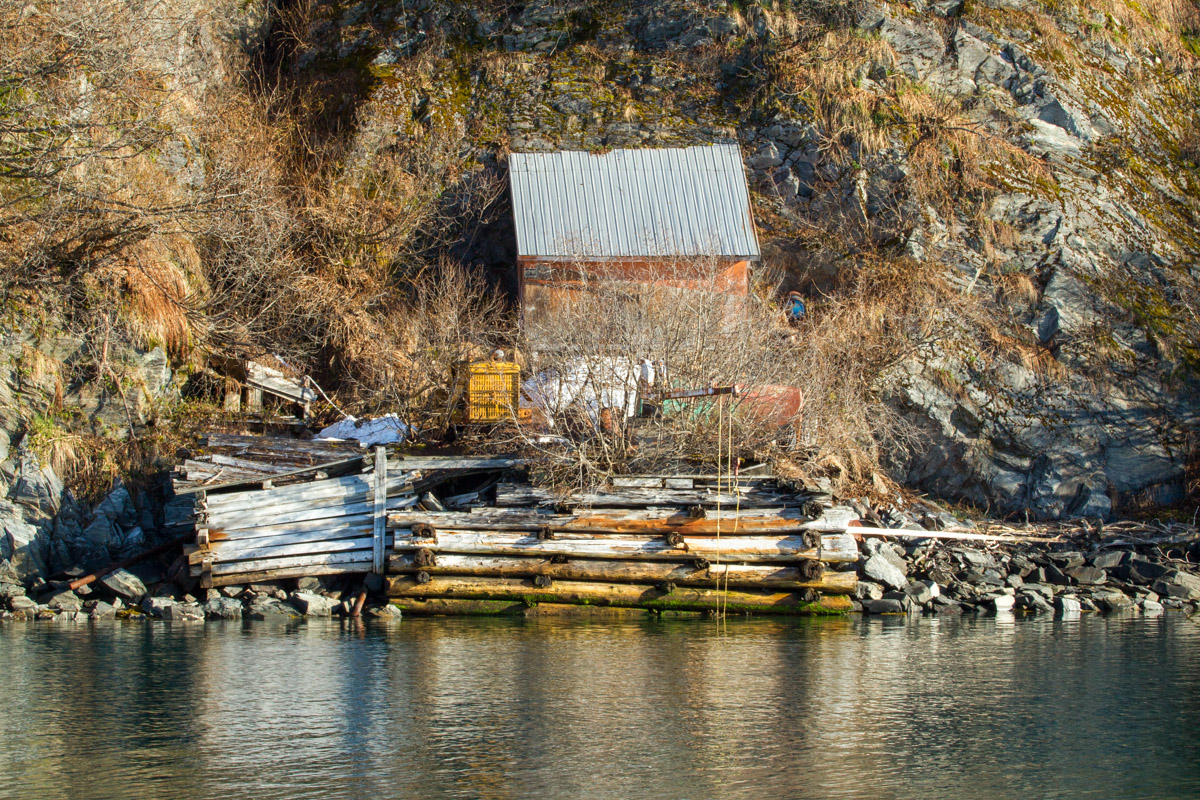Valdez Tsunami Map
While we don't expect another tsunami anytime soon, and the town of Valdez has been moved to a more tsunami friendly location, here is some information to be aware of, as tsunami's are still a possibility in Valdez. Every Wednesday evening at 5pm the tsunami siren is tested. If you are to hear the tsunami at other times you should immediately head to high ground. In most cases in town head to the high school. If further out of town go to the airport. Or if you're past Valdez Glacier Stream travel out the highway past Robe Lake (six mile marker on the Richardson Highway). If out Dayville Road and a tsunami is in sight head up the hillside, otherwise go past 6 mile on the Richardson Highway.
The adjacent map shows expected levels of tsunami encroachment to Valdez depending on the type of tsunami.
Yellow is the current highest high tides. Scenario's 1-6 signify an underwater sluff of shelf falling into deeper waters. Scenario's 13-15 are typical fault slips occurring in Prince William Sound or the Gulf of Alaska.

